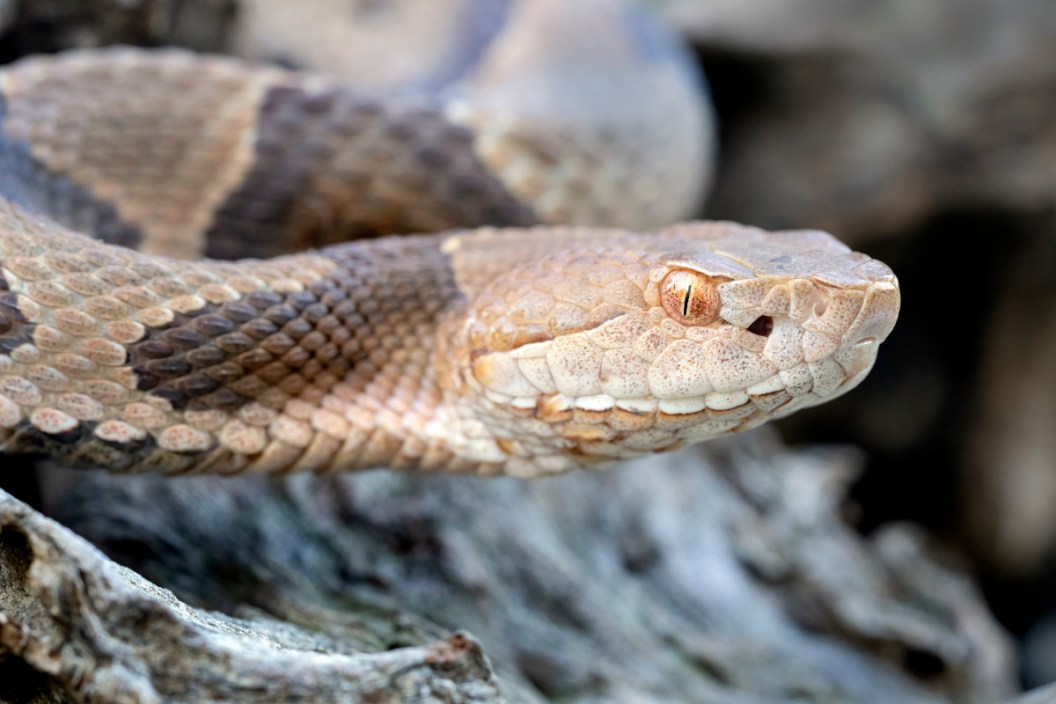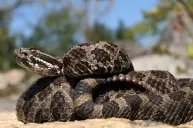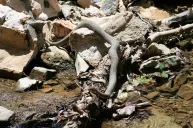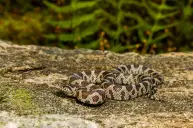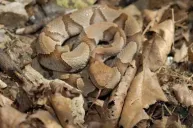Ohio is one of those states that flies under the radar as far as wildlife goes. Most people know it is home to a healthy whitetail deer population and that's about it. The Buckeye state is one of those locations that most people assume cannot possibly be home to any dangerous snakes. There may be some scorching hot summers, but there are also bitterly cold winters. The kind most people don't associate with reptiles. Surely all the dangerous snakes live further South right? Well, we hate to be the bearers of bad news, but the Ohio Department of Natural Resources recognizes at three venomous species slithering around the state. And at least two species on this list are responsible for a fair number of the venomous snake bites that happen here in North America every year. Turns out, this place has enough snakes to cause folks to need to watch their step.
There is some good news. All three species are easy to identify, and most aren't seeking humans out to pester or attack them. Most simply want to be left alone, and the more you know about them, the easier it will be to accomplish that. Without further delay, here are the state of Ohio's three venomous snake species.
Northern Copperhead
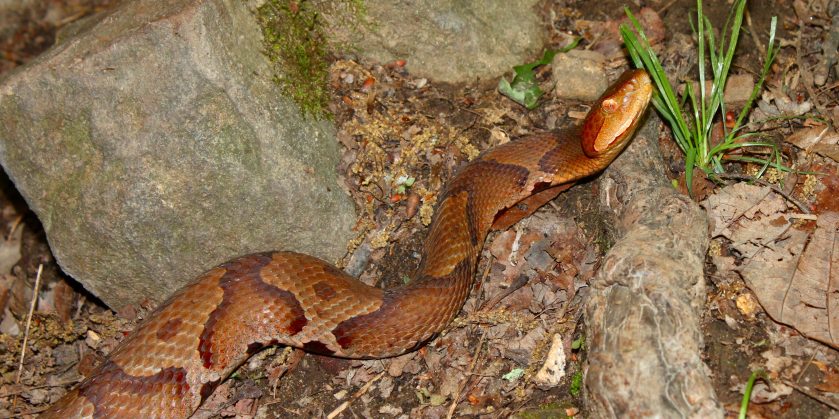
Sometimes also called the Eastern Copperhead, Agkistrodon contortrix is a pit viper. The Northern Copperhead is a beautiful serpent that is usually marked with a copper or reddish-brown coloration and darker brown bands. Look for an hourglass shape on older snakes. Baby copperheads have vibrant yellow or green tail that acts as a giveaway to the snake's identification. It loves to eat small rodents like mice, but it will also go after frogs, small snakes, small birds, and insects. Female copperheads have a territory of around eight acres while the males may roam up to 24 acres using the heat sensitive pits in their heads to hunt. Watch for them around old buildings, old logging sawmill slab piles, rock crevices, and areas bordering wetlands and swamps where small mammals are present. Larger specimens may measure as much as three feet. However, most are much smaller than that, in the 20 to 30-inch range.
The copperhead likes to hide in leaf litter, and you may not see until you are directly on top of it. Watch the ground closely when hiking, camping, or hunting in copperhead country, as most bites seem to happen when someone unknowingly steps on one. We recommend simply giving the snake a wide berth. The good news is this snake is only found in the southern and southeastern parts of the state. Many people mix the identification of a copperhead up with a water moccasin or cottonmouth. If you hear an Ohioan say they saw either of those in Ohio, it was probably the Northern copperhead or the non-venomous northern water snake.
Massasauga Rattlesnake
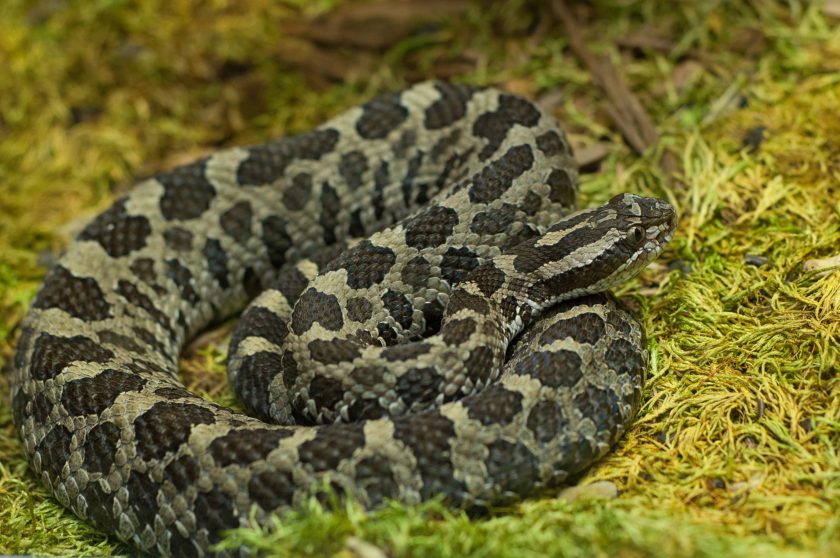
The Eastern Massasauga Rattlesnake (Sistrurus catenatus) is a venomous species named after a combination of two words from the language of the Chippewa tribe of Native Americans. It is one of only two rattlesnake species native to Ohio. You may also sometimes hear this one called a "swamp rattler" in some areas. It is characterized by dark blotches across the back and an overall grey or tan coloration. Look for a head that's roughly in the shape of a heart and vertical pupils. This is a small rattlesnake, reaching only about two feet maximum, making it hard to spot in many cases. While this snake has a decent range across central and parts of northeastern Ohio, your odds of running into one are slim. This species is extremely shy and does not frequent places where humans are often found. These snakes like to hunt in wet prairies, early succession fields, and sedge meadows. They are not fond of open waters.
These Ohio year-long residents hibernate in small groups in moist soil. Young birds, shrews, mice, voles, salamanders, and other small species are regular meals for this slithering recluse. Fortunately, due to the reclusive nature of this endangered species, snakebites are extremely rare.
Timber Rattlesnake

Eastern Timber Rattlesnakes are all about wooded areas. They will sun themselves where the sunlight penetrates the leaf canopy. Deep rock crevices are their preferred hibernating areas and den sites. Coloration can vary from dark brown to brownish-gray, or a much darker, almost black appearance. This one is usually obvious to spot since it can grow to lengths of six feet. Although most specimens are in the 30-50-inch range.
Squirrels, chipmunks, rats, amphibians, and mice are often on the menu for the Timber Rattler. They're active in the summer months but hibernate in wintertime and are more lethargic in the colder spring and fall months. The good news for snake haters is that this species is usually only seen in the extreme southern parts of the state. They prefer more mountainous areas. Keep a close eye out for them in rocky areas where there are lots of crevices to hide and ambush prey. Although you'll also want to keep an eye out for them in heavily wooded areas. Unlike a species like the copperhead, this snake will usually let you know you're too close with an audibly loud rattle. Give this one a wide berth as it is considered one of the most dangerous snakes in North America and has some extremely potent venom.
If you come across one of these snakes, it is best left alone. They can be dangerous snakes if not given their space. Most reported snakebites seem to happen when someone tries to pick up, move, or kill a snake. And odds are, you won't see any of the ones listed here. In fact, in my 40+ years of being an Ohio resident, I have yet to come across one from all my years of wilderness trekking. Older woodsmen have told me of times when they were more common, but habitat loss has been a major barrier to higher populations. So long as you know how to identify and avoid them, these three snakes should give you no trouble during your outdoor adventures.
Do you like articles about the outdoors? Click here to view more articles by Eric Nestor. You can follow him @ericthewoodsman on Twitter, The Classic Woodsman on Facebook, and @theclassicwoodsman on Instagram. You can view more Nestor Photography photos at Nestor Photography.
